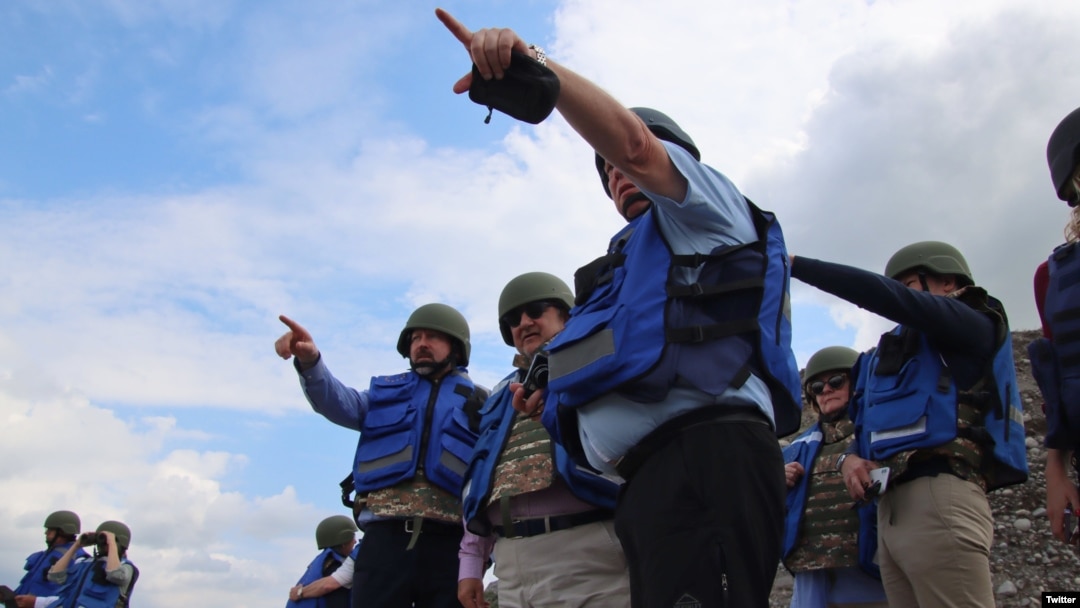Baku stopped on June 15 the movement through the Lachin corridor of humanitarian convoys organized by the Russian peacekeeping contingent in Karabakh and the International Committee of the Red Cross. The move followed a shootout near an Azerbaijani checkpoint controversially set up in late April by a bridge over the Hakari river, the starting point of the Lachin corridor.
Armenia said its border guards opened fire to stop Azerbaijani servicemen manning the checkpoint from placing an Azerbaijani flag on adjacent Armenian territory. Azerbaijan insisted, however, that they did not cross into Armenia.
“The near total blockage of the Lachin corridor, in place since 15 June is very worrying,” Nabila Massrali, the EU’s foreign policy spokeswoman, said in a statement. “It directly threatens the livelihoods of the local population and raises serious fears of a potential humanitarian crisis.”
The EU was also alarmed by heightened tensions along the Armenian-Azerbaijani border and the Karabakh “line of contact.”
“Following the series of recent high-level meetings, the EU continues to be engaged at the highest political level to help defuse these tensions and find mutually acceptable solutions,” added Massrali.
Her statement came two days after a group of European Parliament members and the head of the EU Delegation in Yerevan, Andrea Wiktorin, joined EU monitors for a patrol near the Hakari bridge. Nathalie Loiseau, who led the visiting parliamentary delegation, demanded afterwards an immediate end to the “illegal” blockade.
The Azerbaijani side showed on Friday no signs of planning to lift it. A video released by Karabakh’s leadership showed that Azerbaijani security personnel placed concrete road blocks on the bridge, making renewed traffic through the corridor even more difficult.


